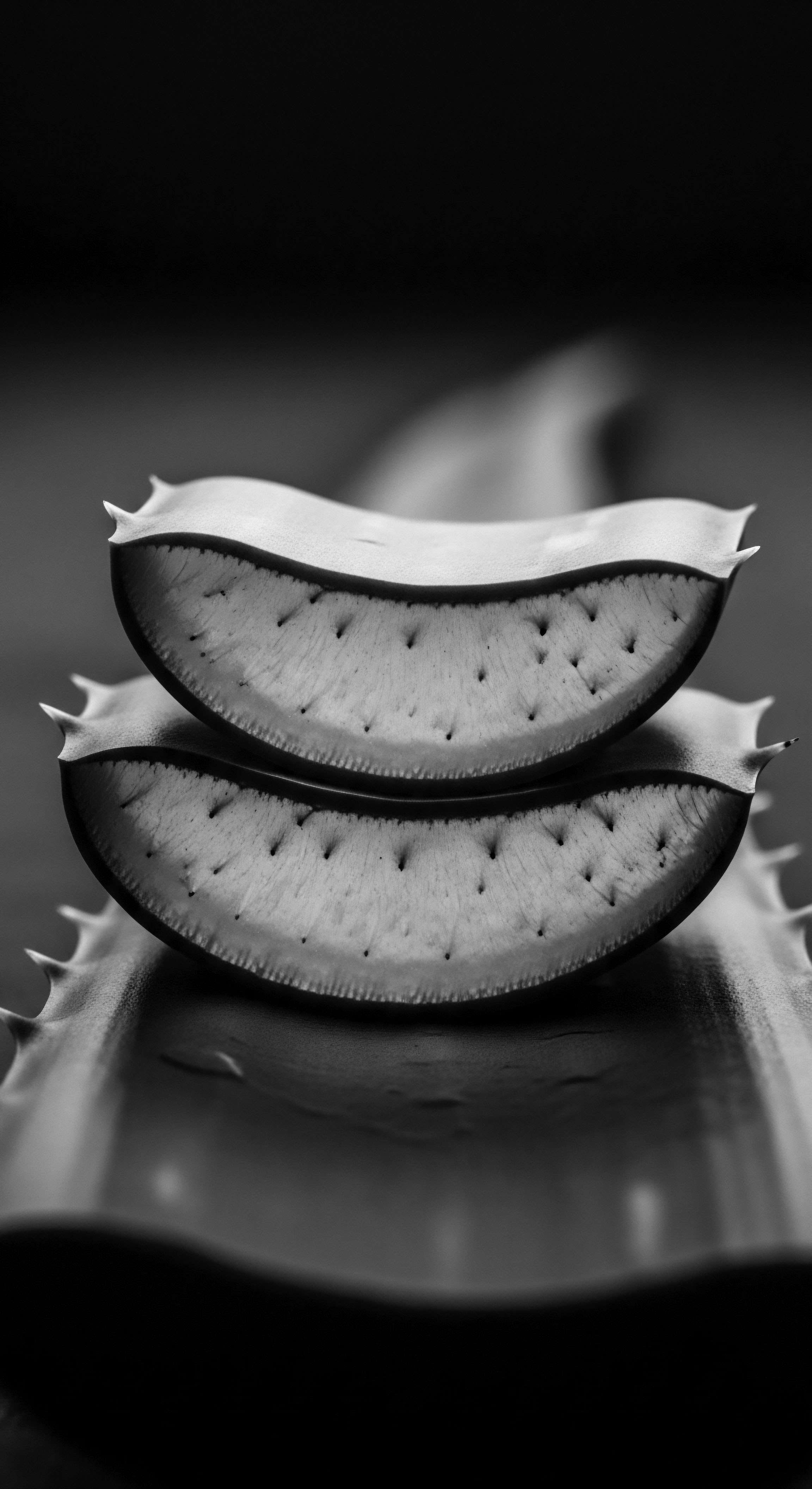
Roots
To truly comprehend why the very coils that crown us, the textures that sing of ancient lineages and resilience, seem to thirst with an unyielding longing, we must journey back. Not merely to the surface of the strand, but to the deep, resonant echoes within its very structure, a story etched across millennia. It is a dialogue between the elemental biology of our hair and the profound heritage that shaped its care, passed down through whispers and hands, from one generation to the next. This inquiry into moisture’s swift departure from textured hair is not a mere scientific dissection; it is an ancestral meditation, a seeking of wisdom from the source.
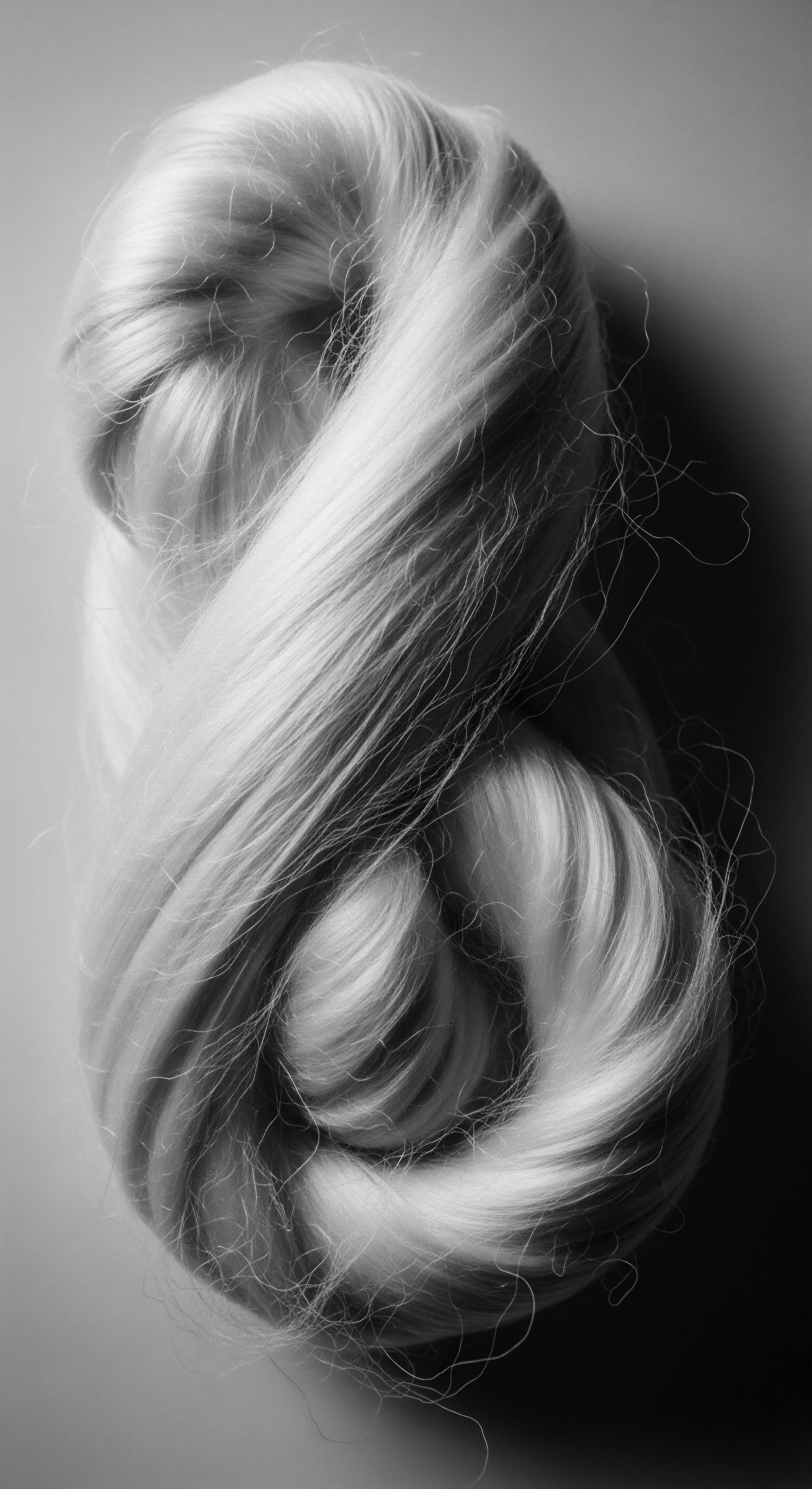
The Architecture of Ancestral Hair
Consider the hair strand not as a simple filament, but as a complex, living archive. Each helix, each bend, each curve holds secrets to its behavior, particularly its relationship with water. The science, as we understand it today, speaks of the cuticle—the outermost layer of the hair shaft, akin to shingles on a roof. On straight hair, these cuticles lie relatively flat, smooth, and tightly bound, creating a surface that repels water and traps moisture within.
For textured hair, however, the story takes a different turn. The very elliptical shape of the hair follicle, which gives rise to the beautiful spirals and zig-zags we celebrate, means the cuticle layers often do not lie as uniformly flat. They can be slightly raised, or even fractured at the points of curvature, creating tiny portals for moisture to escape. This inherent architectural difference, a gift of genetic inheritance, plays a central role in the rapid evaporation we observe.
Beyond the cuticle, the very core of the hair, the cortex, also contributes. Textured hair, particularly those with tighter coils, often possesses a less uniform distribution of keratin, the protein building block of hair. This can lead to variations in porosity along the strand, meaning some sections may absorb water readily, yet struggle to hold it, releasing it just as swiftly into the atmosphere. The sheer surface area, too, is a silent contributor.
A tightly coiled strand, when straightened, would reveal a far greater length and surface exposure than a straight strand of the same visible length. More surface means more points of contact with the air, more opportunities for precious water molecules to depart.
The intrinsic architecture of textured hair, from its elliptical follicle to its lifted cuticle layers, inherently invites moisture’s swift departure.
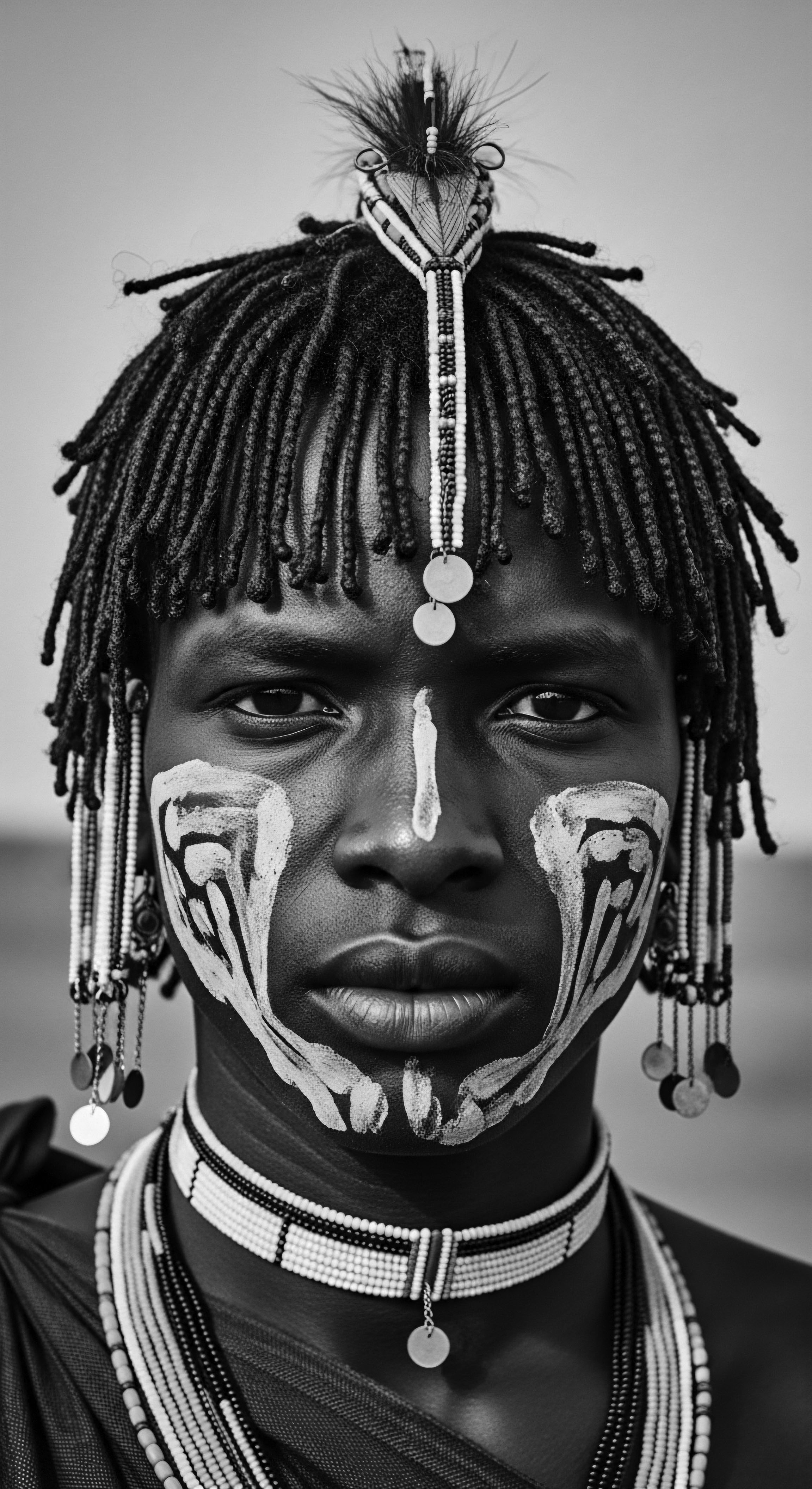
The Living Lexicon of Hair Forms
For centuries, before modern classification systems, communities recognized and named hair textures through lived experience and practical care. These traditional terms often spoke to the hair’s feel, its response to moisture, or its appearance, reflecting an intuitive understanding of its properties. While contemporary systems, like those categorizing hair into types 3 and 4, offer a scientific framework, they sometimes overlook the deep, historical appreciation for the subtle variations within these broad categories.
Our ancestors, through generations of observation, understood that a tightly coiled strand, often described with terms like Kinky or Coily, behaved differently from a looser curl, or Wavy hair, especially concerning its thirst for hydration. This ancestral knowledge was not merely descriptive; it was prescriptive, guiding the choice of emollients, styling methods, and protective measures.
The very language used to describe textured hair has evolved, often carrying the weight of historical perceptions. Words once used to demean or categorize, like Nappy, are being reclaimed, re-infused with pride and an understanding of their true, descriptive power for tightly coiled textures. This reclaiming is a testament to the enduring spirit of heritage, transforming narratives around hair and its unique needs.
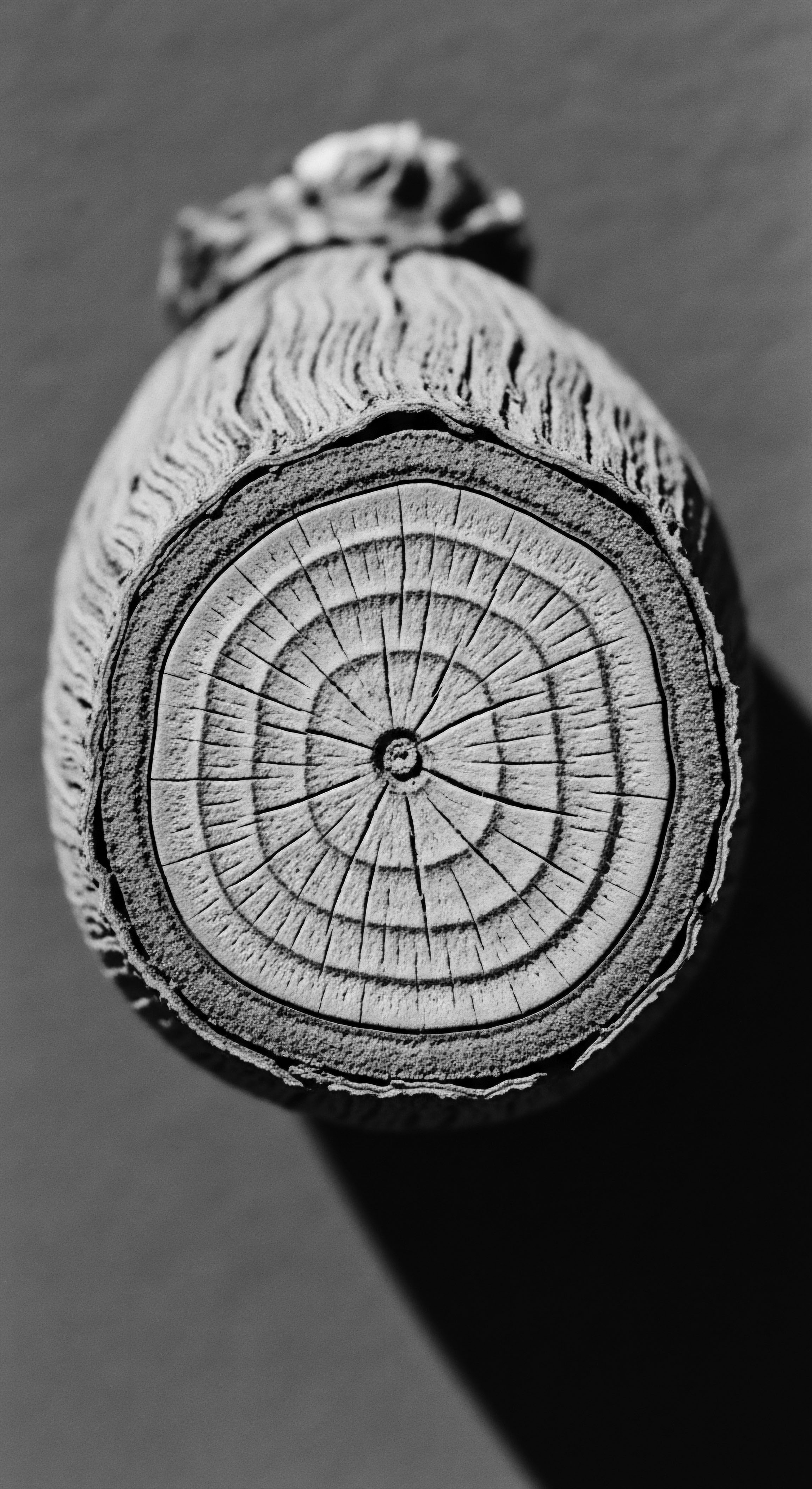
Cycles of Growth and Environmental Echoes
Hair growth cycles—anagen (growth), catagen (transition), and telogen (rest)—are universal, yet the environment and historical conditions of our ancestors played a silent role in shaping the very resilience of textured hair. In regions where our forebears thrived, often under the relentless sun and in varied humidity, hair developed a robust nature, capable of enduring extremes. The constant need to protect hair from drying winds, harsh sun, and dust led to the development of practices that inherently addressed moisture retention.
Consider the historical reality ❉ many ancestral communities lived in climates where natural emollients were abundant and vital. The reliance on plant-based oils and butters, such as Shea Butter or Palm Oil, was not simply cosmetic; it was a survival strategy for hair health. These practices, born of necessity and deep botanical wisdom, created a protective barrier, slowing the escape of water from the hair shaft. The very environment shaped the practices, and these practices, in turn, reinforced an understanding of the hair’s inherent need for consistent moisture.
| Traditional Ingredient/Practice Shea Butter (West Africa) |
| Ancestral Purpose for Hair Protection from sun, dryness; emollient. |
| Modern Scientific Link to Moisture Rich in fatty acids, forms occlusive barrier, reducing transepidermal water loss. |
| Traditional Ingredient/Practice Baobab Oil (Southern Africa) |
| Ancestral Purpose for Hair Nourishment, elasticity, environmental shield. |
| Modern Scientific Link to Moisture Contains omega fatty acids, promoting cuticle health and sealing moisture. |
| Traditional Ingredient/Practice Braiding/Twisting (Global) |
| Ancestral Purpose for Hair Protection from elements, organization. |
| Modern Scientific Link to Moisture Reduces exposure to air, minimizing evaporation; prevents tangling and breakage. |
| Traditional Ingredient/Practice These practices reflect a deep, intuitive understanding of hair's needs, predating modern chemistry. |
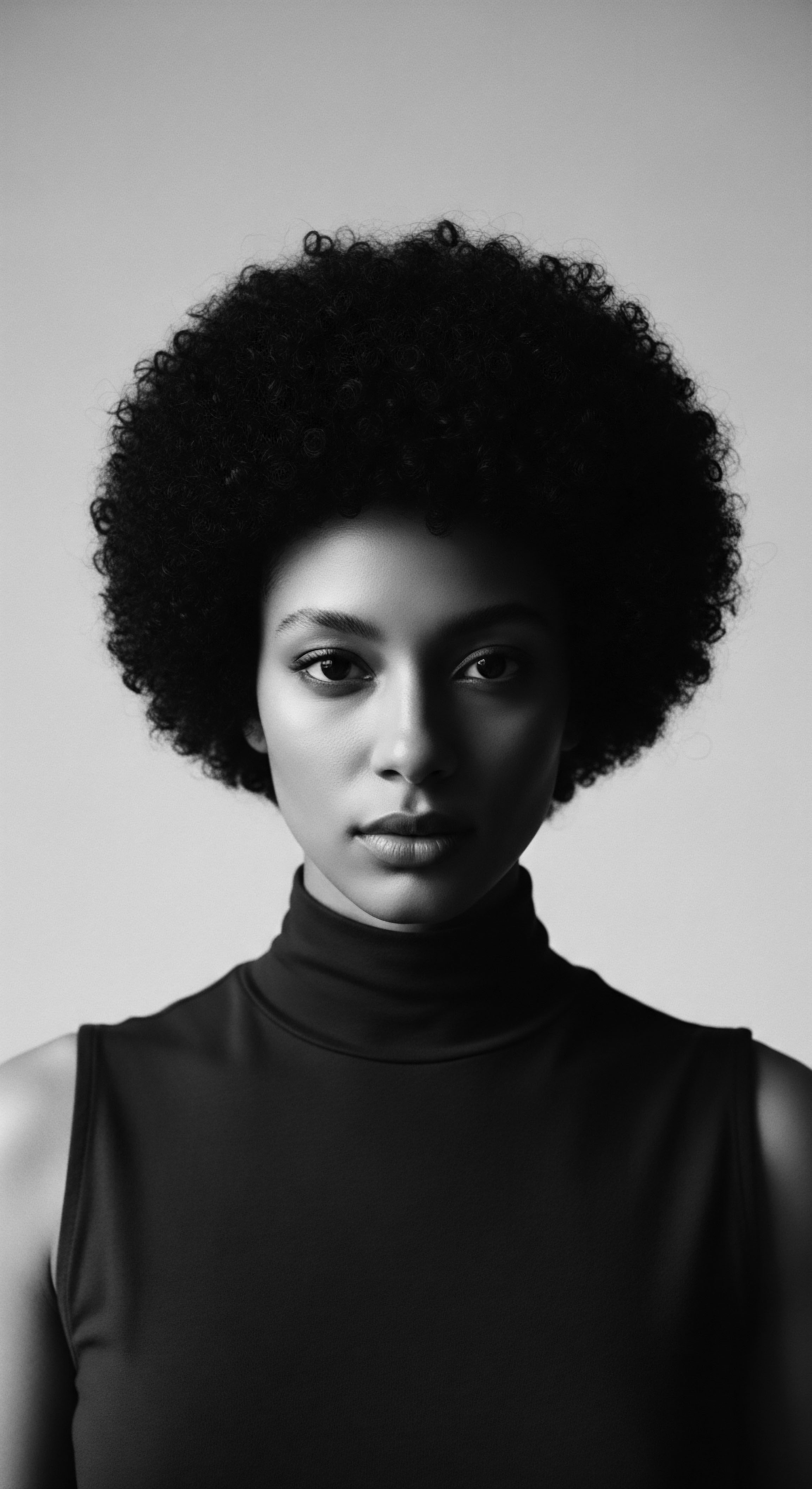
Ritual
As we move from the foundational whispers of our hair’s very being, we step into the vibrant, living space of ritual—the techniques, tools, and transformations that have shaped our experience of textured hair. This journey is not just about understanding the ‘why’ of moisture loss, but how generations have responded to it, crafting practices that speak to both ancestral ingenuity and contemporary adaptation. It is here, in the tender, intentional actions of care, that we truly begin to honor the unique heritage woven into every strand.
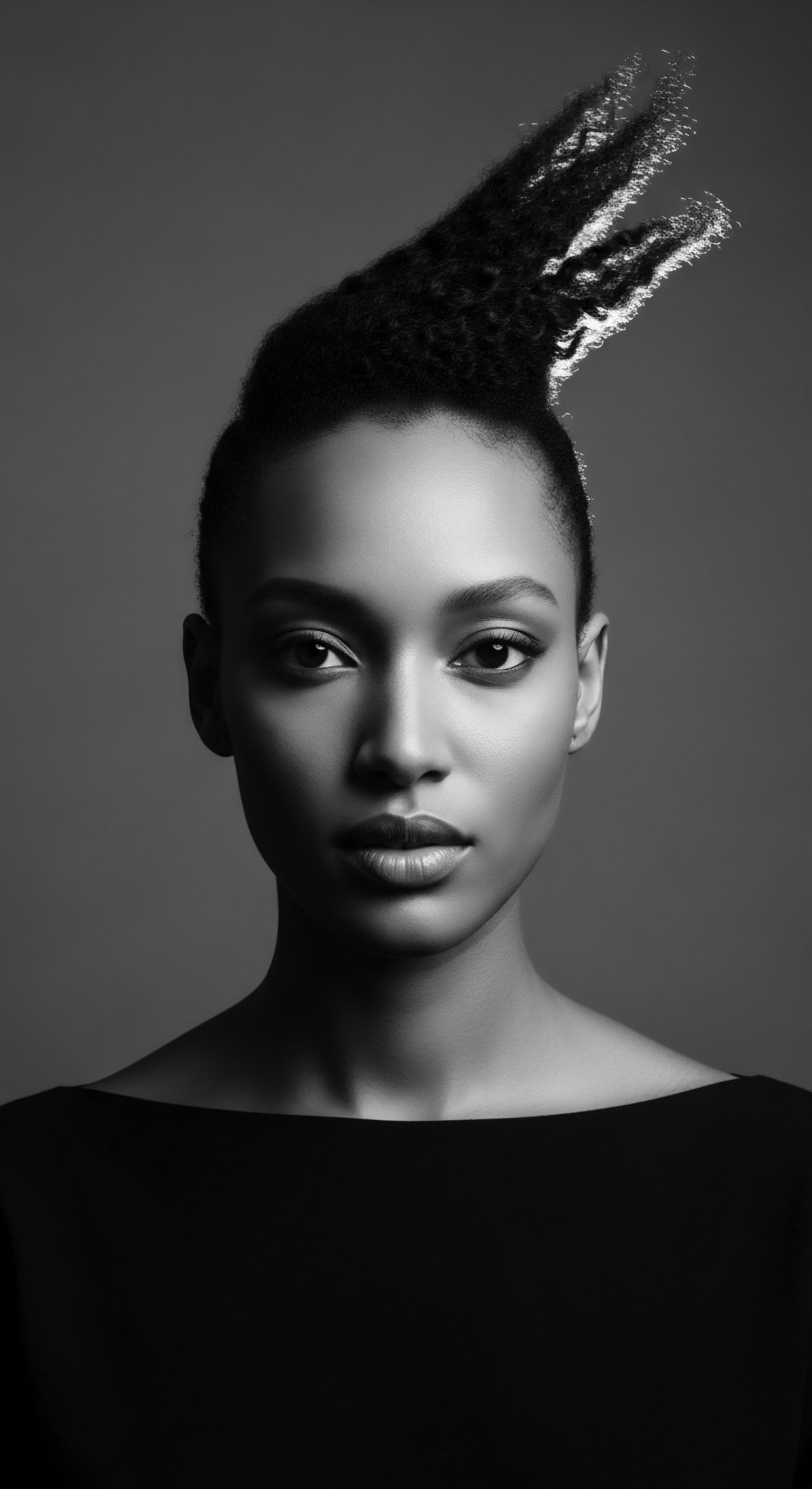
Protective Styling as Ancestral Shield
The practice of protective styling, far from being a modern trend, holds deep roots in ancestral wisdom. Across the African continent and throughout the diaspora, styles like Cornrows, Braids, and Twists were not merely aesthetic choices; they were vital strategies for preserving hair health, particularly against moisture loss. By gathering the hair into compact, enclosed forms, these styles minimized exposure to environmental elements—the drying winds, the scorching sun, the dust—that accelerate water evaporation from the hair shaft. This ancient knowledge, passed down through mothers, aunts, and community elders, understood that less exposure meant more retained moisture.
The very act of braiding or twisting also helps to evenly distribute natural oils (sebum) along the hair shaft, which otherwise struggles to travel down the curves and coils. This physical manipulation, a gentle massage of sorts, aids in sealing the cuticle and coating the strand, creating a natural barrier. The longevity of these styles meant less daily manipulation, reducing breakage and further safeguarding the hair’s integrity, thereby indirectly aiding in moisture retention over time.
Protective styles, born of ancestral ingenuity, serve as timeless shields against environmental moisture depletion.
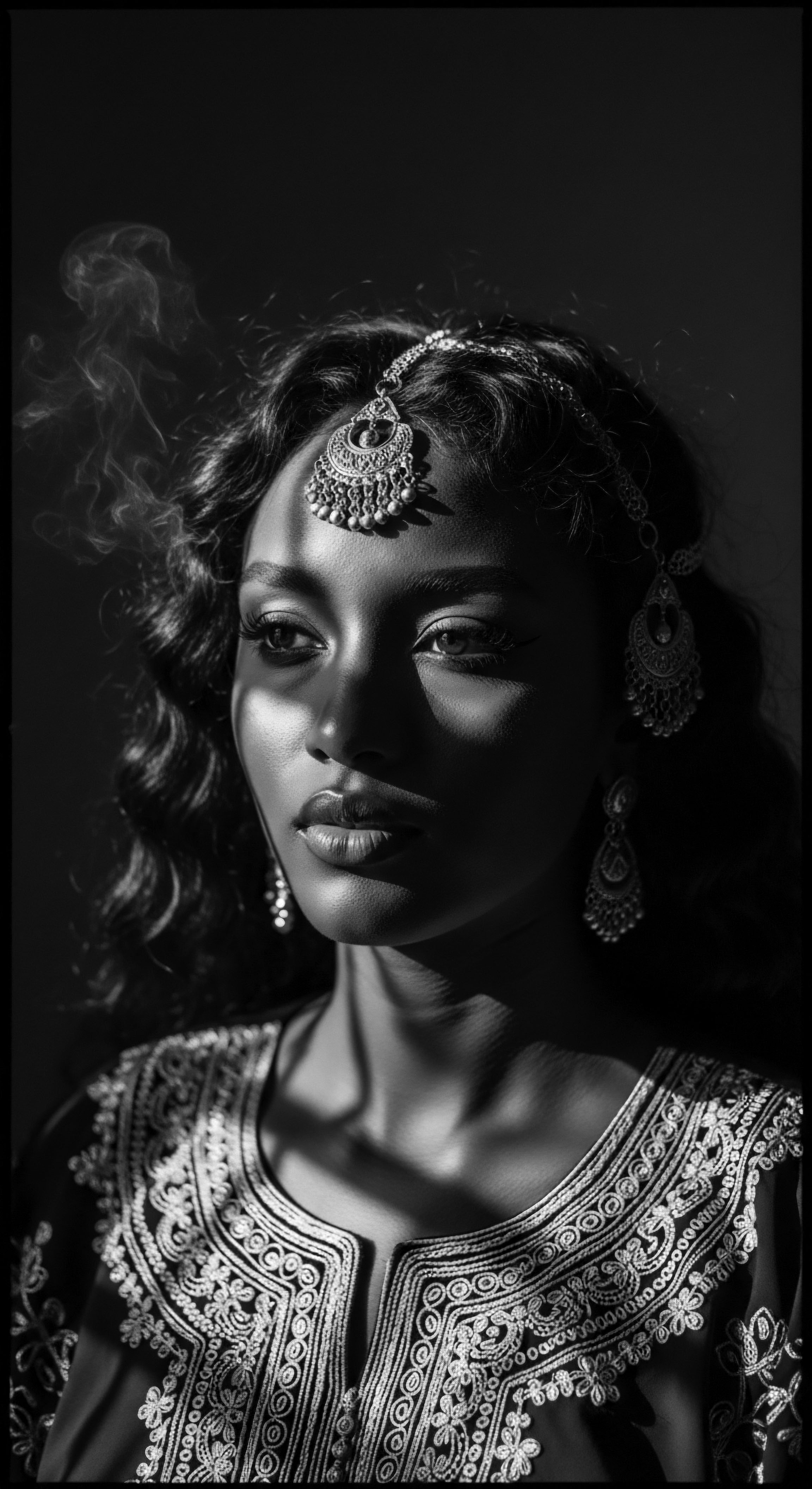
Defining the Coil ❉ Traditional Techniques and Their Wisdom
The quest for coil definition, a celebration of textured hair’s natural beauty, also carries echoes of ancient practices. While today we might use specific gels or creams, the underlying principle of enhancing and maintaining the hair’s natural curl pattern, often through hydration and gentle manipulation, has a long history. Traditional methods often involved the use of natural humectants and emollients—substances that attract and seal in moisture—derived directly from the earth.
Consider the meticulous process of finger coiling or shingling, practices that define each individual coil. These techniques, though perhaps refined with modern products, mirror the patient, hands-on approach of ancestral hair care, where each strand was treated with reverence. The application of water, followed by a rich butter or oil, and then the careful shaping, allowed for the hair to dry in its most hydrated and defined state, minimizing frizz and maximizing moisture retention.
- Water Rinses ❉ Ancestral cleansing rituals often involved pure water, sometimes infused with herbs, to hydrate and cleanse the scalp without stripping natural oils.
- Plant Butters ❉ The application of substances like Shea Butter or Cocoa Butter after hydration to seal in moisture and protect the hair.
- Herbal Infusions ❉ Using teas or infusions from plants like Hibiscus or Fenugreek, known for their conditioning and strengthening properties, which also aid in moisture retention.
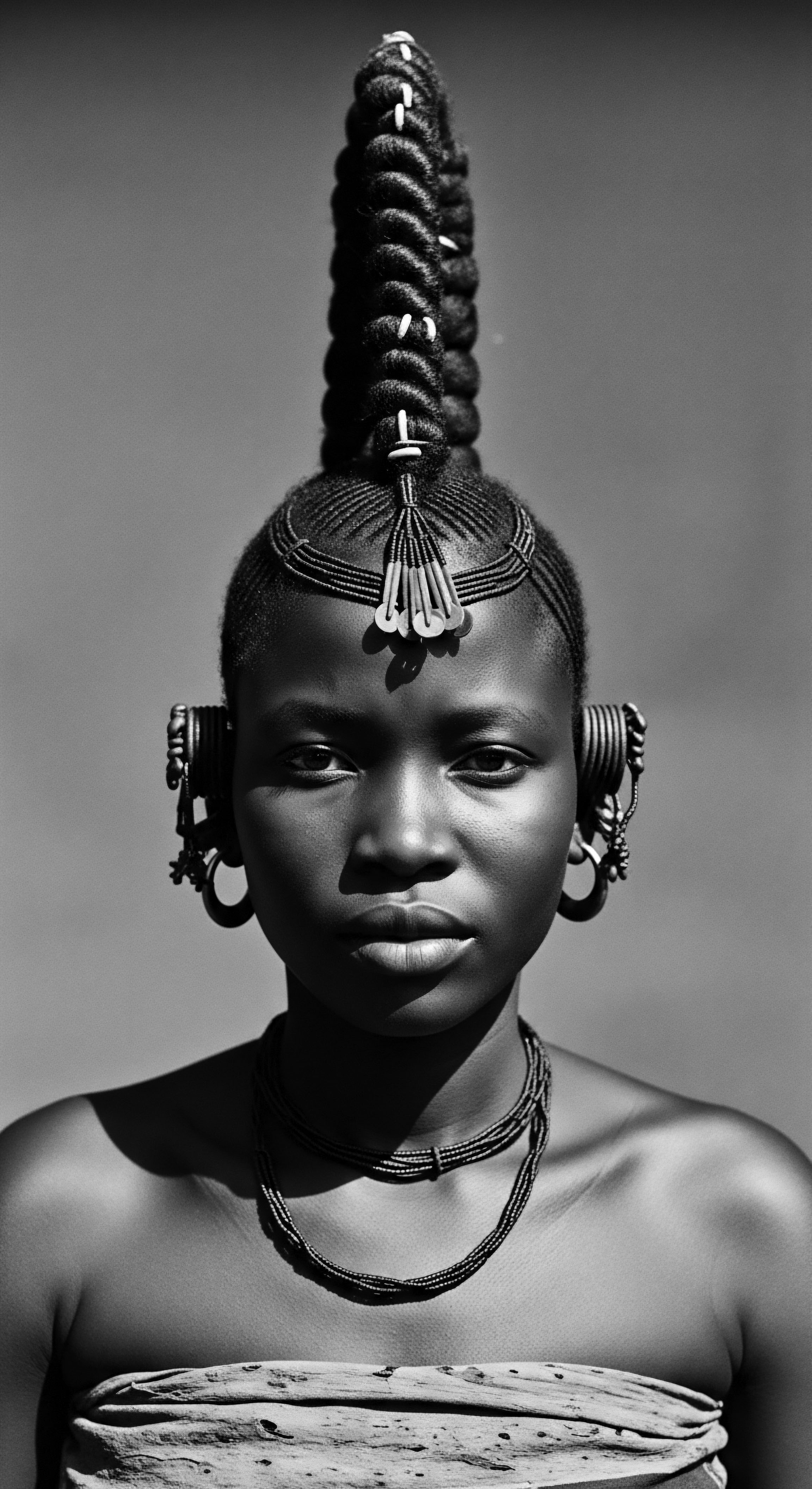
Tools of the Trade ❉ Ancient and Modern Echoes
The tools used for textured hair care have evolved, yet their purpose remains deeply connected to ancestral practices. Before the advent of plastic combs, our ancestors crafted tools from wood, bone, or horn, designed to navigate the unique terrain of coiled hair with minimal damage. These wide-toothed implements, often smoothed and polished, were used gently, prioritizing detangling and distribution of natural oils without causing excessive friction or breakage, which can exacerbate moisture loss by compromising the cuticle.
Even the concept of heat styling, while fraught with modern dangers, has a distant, gentler ancestor. In some traditions, hair was carefully warmed with heated stones or natural elements to aid in styling or drying, always with an intuitive understanding of preventing damage. This contrasts sharply with contemporary high-heat tools that can strip hair of its natural moisture, highlighting the delicate balance between manipulation and preservation. The wisdom of our forebears often prioritized hair integrity above all else, recognizing that a healthy strand, even if unadorned, held its moisture far better.
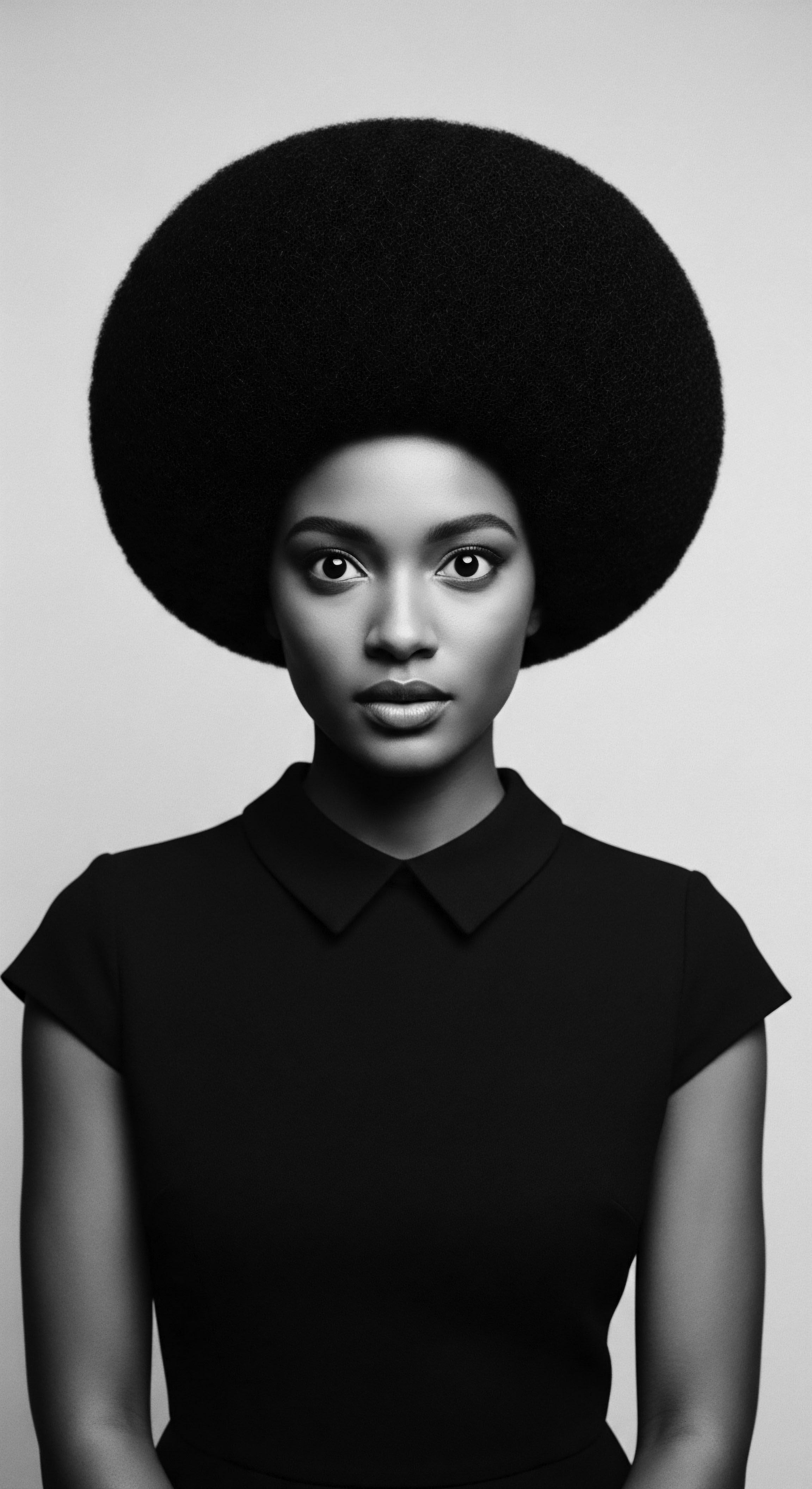
Relay
How does the very thirst of textured hair, its rapid release of moisture, echo through the cultural narratives we construct, and how might this biological reality shape the futures we envision for our hair traditions? This section moves beyond the immediate understanding of moisture loss to explore its profound implications across biological, sociological, and historical landscapes. It is here that science and heritage truly converge, revealing the intricate interplay that defines the textured hair experience.
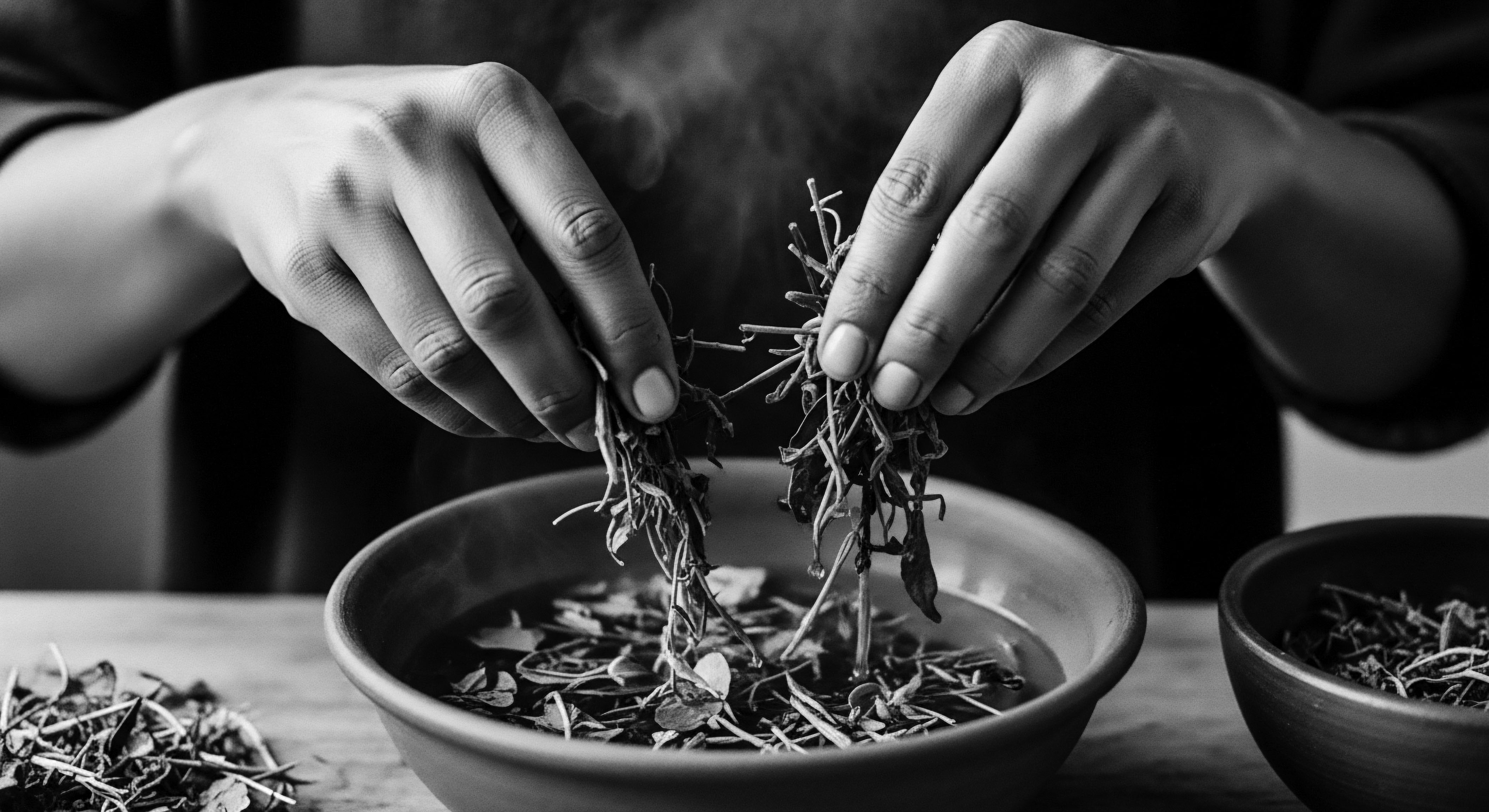
The Hydration Imperative ❉ A Biological Deep Dive
The scientific explanation for why textured hair loses moisture quickly is rooted in its unique structural morphology. The elliptical cross-section of the hair shaft, characteristic of coiled and curly strands, means that the cuticle scales, which ideally lie flat and overlapping like roof tiles, tend to be more raised and irregular at the points of curvature. This lifted cuticle allows for a greater rate of water evaporation from the hair’s interior (cortex) to the external environment.
This phenomenon, known as transepidermal water loss (TEWL) when applied to skin, similarly affects hair, albeit through its specific structure. The greater the coil density, the more points of curvature exist along the strand, and thus, the more opportunities for moisture egress.
Furthermore, the distribution of sebum, the natural oil produced by the scalp, presents another challenge. On straight hair, sebum can easily travel down the smooth, straight shaft, coating it and providing a protective, hydrophobic layer that seals in moisture. For coiled hair, the path is far more arduous.
The twists and turns of the helix impede the downward flow of sebum, often leaving the mid-shaft and ends of textured hair comparatively drier and more vulnerable to moisture loss. This inherent biological reality underscores the historical and ongoing need for external moisturization and sealing practices.
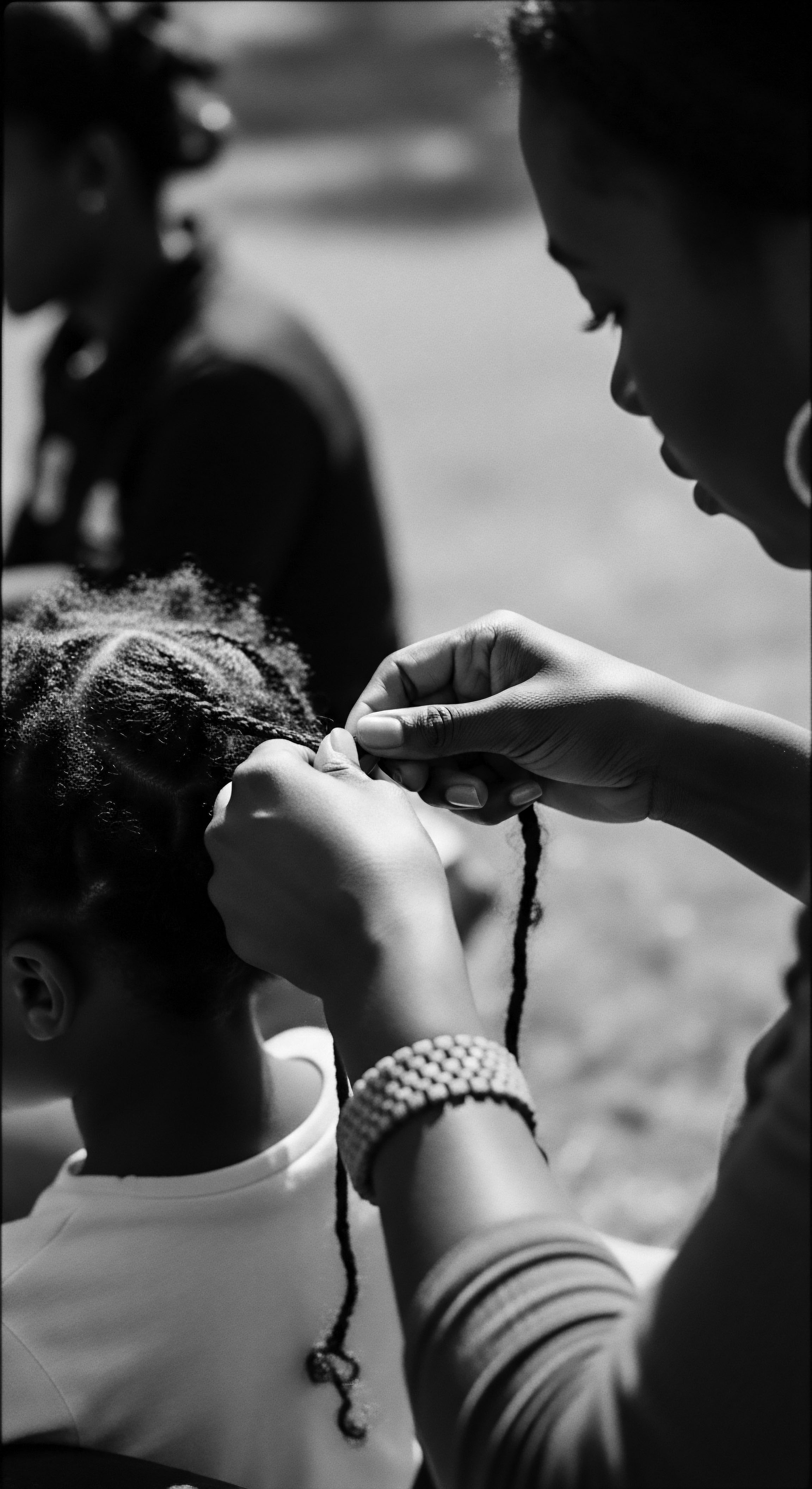
Cultural Resilience and The Quest for Moisture
The persistent need for moisture in textured hair has, over centuries, shaped cultural practices and expressions of identity. In many African and diasporic communities, hair care rituals became profound acts of self-preservation and communal bonding. The diligent application of natural oils and butters, the intricate braiding and twisting, and the shared knowledge of botanical remedies were not simply about aesthetics; they were acts of resistance against the elements, against the very nature of the hair’s thirst, and later, against oppressive beauty standards.
Consider the historical narrative of Black hair in the Americas. During slavery, access to traditional ingredients and tools was severely limited, yet the ingenuity of enslaved people led to adaptations and the preservation of hair care knowledge through oral tradition and clandestine practices. The use of kitchen ingredients, the creation of makeshift tools, and the continuation of protective styles under duress speak to an enduring commitment to hair health, despite circumstances that actively sought to strip away dignity. This resilience in maintaining hair’s moisture and vitality, even in the face of adversity, is a powerful testament to the deep connection between hair and identity.
A compelling historical example of this resilience and adaptation is the enduring practice of Hair Oiling in many African and diasporic communities. In a study examining hair care practices among women of African descent, it was noted that “the application of oils and butters to the hair and scalp has been a consistent practice for centuries, originating from traditional African societies where these emollients served to protect hair from harsh climates and maintain its pliability and moisture content” (Charles, 2018). This continuity of practice, even as specific ingredients or contexts shifted, directly addresses the inherent moisture loss of textured hair and speaks to a deep, inherited understanding of its needs.
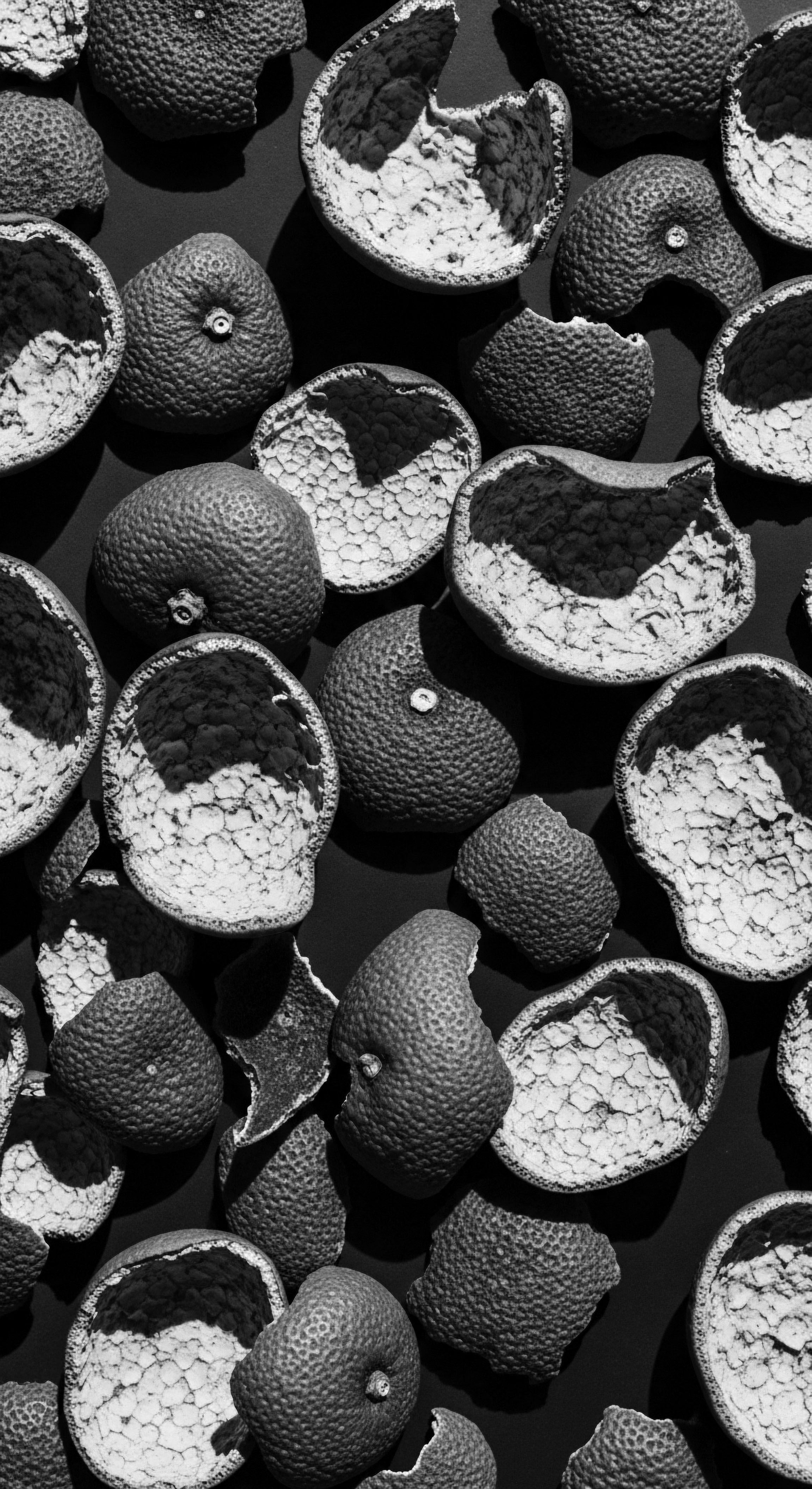
What Modern Science Affirms from Ancestral Wisdom?
Modern trichology and cosmetic science, with their advanced tools and analytical methods, increasingly affirm the efficacy of many ancestral practices. The humectant properties of ingredients like honey, used traditionally, are now understood at a molecular level for their ability to draw moisture from the air. The occlusive nature of rich butters, like Shea or Mango Butter, is validated by their lipid profiles, which form a protective barrier on the hair shaft, reducing water evaporation.
The very structure of a tightly coiled hair strand, making it prone to dryness, means that a multi-layered approach to moisture is not merely a preference, but a scientific necessity. This often involves:
- Hydration ❉ Introducing water directly to the hair.
- Humectants ❉ Using ingredients that attract and hold water (e.g. glycerin, aloe vera).
- Emollients ❉ Softening and smoothing the hair surface (e.g. natural oils, fatty alcohols).
- Occlusives ❉ Creating a barrier to seal moisture in (e.g. heavy butters, waxes).
This layered approach, often simplified into the “LOC” (Liquid, Oil, Cream) method in contemporary hair care, mirrors the intuitive layering of water, light oils, and heavier butters practiced by our ancestors. They understood, without the benefit of microscopes, that a thirsty strand required more than just a single application; it needed a thoughtful, sequential ritual to truly thrive.
| Porosity Level Low Porosity |
| Heritage-Based Observation Hair that takes time to wet, feels slick with product. |
| Scientific Explanation Tightly bound cuticles, resistant to water absorption but retains moisture once absorbed. |
| Porosity Level Normal Porosity |
| Heritage-Based Observation Hair that absorbs moisture well, feels balanced. |
| Scientific Explanation Moderately raised cuticles, good balance of absorption and retention. |
| Porosity Level High Porosity |
| Heritage-Based Observation Hair that wets quickly, dries fast, feels rough. |
| Scientific Explanation Raised or damaged cuticles, absorbs water rapidly but loses it just as quickly. |
| Porosity Level Ancestral practices often intuitively addressed porosity, applying more occlusives to highly porous hair and lighter products to low porosity hair. |
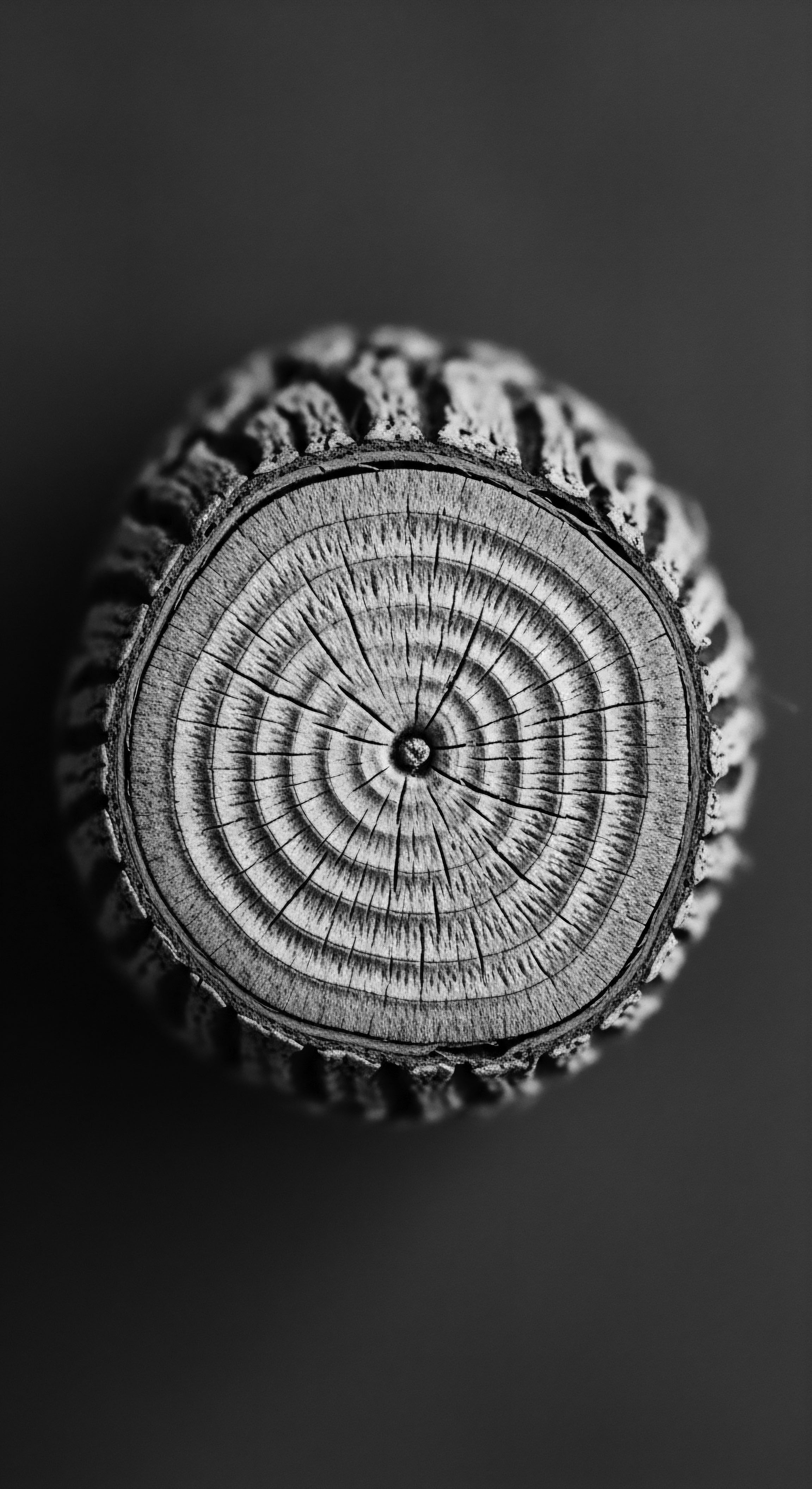
How does the Very Environment We Inhabit Influence Hair’s Moisture Balance?
The environment plays a significant role in the constant battle against moisture loss. Dry climates, low humidity, and even indoor heating or air conditioning can relentlessly pull water from hair strands. Our ancestors, living in direct communion with their natural surroundings, developed seasonal routines for hair care. During dry seasons, heavier butters and more frequent oiling might have been employed.
In humid seasons, perhaps lighter preparations were favored. This responsiveness to environmental cues, a deep attunement to nature’s rhythms, speaks to a holistic understanding of hair health that transcends simple product application. It reminds us that hair does not exist in isolation; it breathes with the world around it, constantly seeking equilibrium.
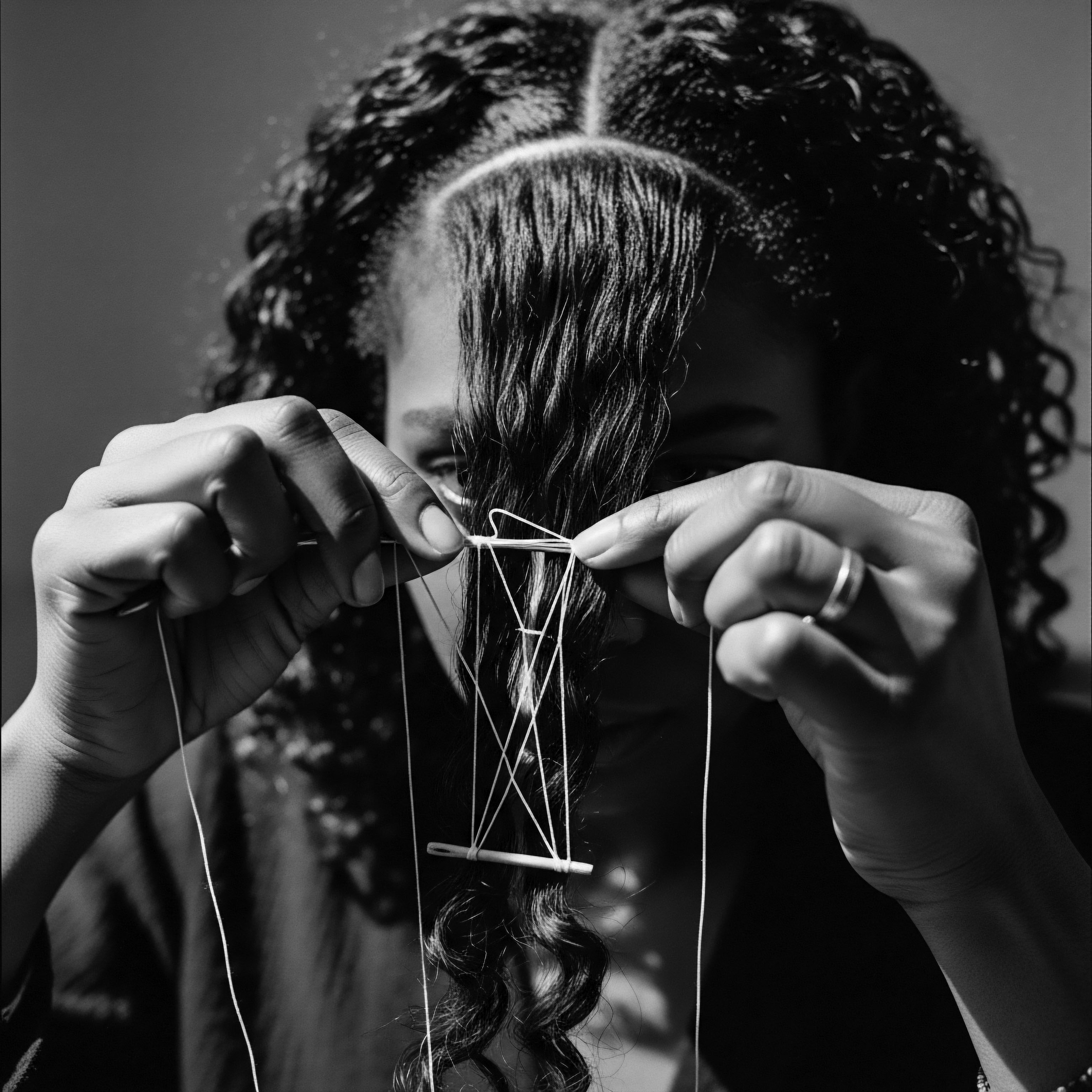
Reflection
The persistent inquiry into why textured hair so readily releases its vital moisture is far more than a technical question; it is a profound journey into the very soul of a strand. It speaks to a biological reality that has, through countless generations, shaped cultural practices, informed ancestral wisdom, and forged an enduring heritage of care and resilience. Our hair, in its inherent thirst, reminds us of the continuous dialogue between our bodies and the world, between the past and the present. Each coil, each curve, carries the memory of ancient hands that sought to nourish and protect, of communities that celebrated its unique beauty, and of a legacy that refuses to be diminished.
To understand its needs is to honor this deep lineage, to recognize that our current regimens are not merely modern inventions but echoes of a timeless, loving attention to what makes us uniquely us. The legacy of textured hair, therefore, is not just about its structure or its science, but about the profound, unbroken chain of care that continues to unfold.
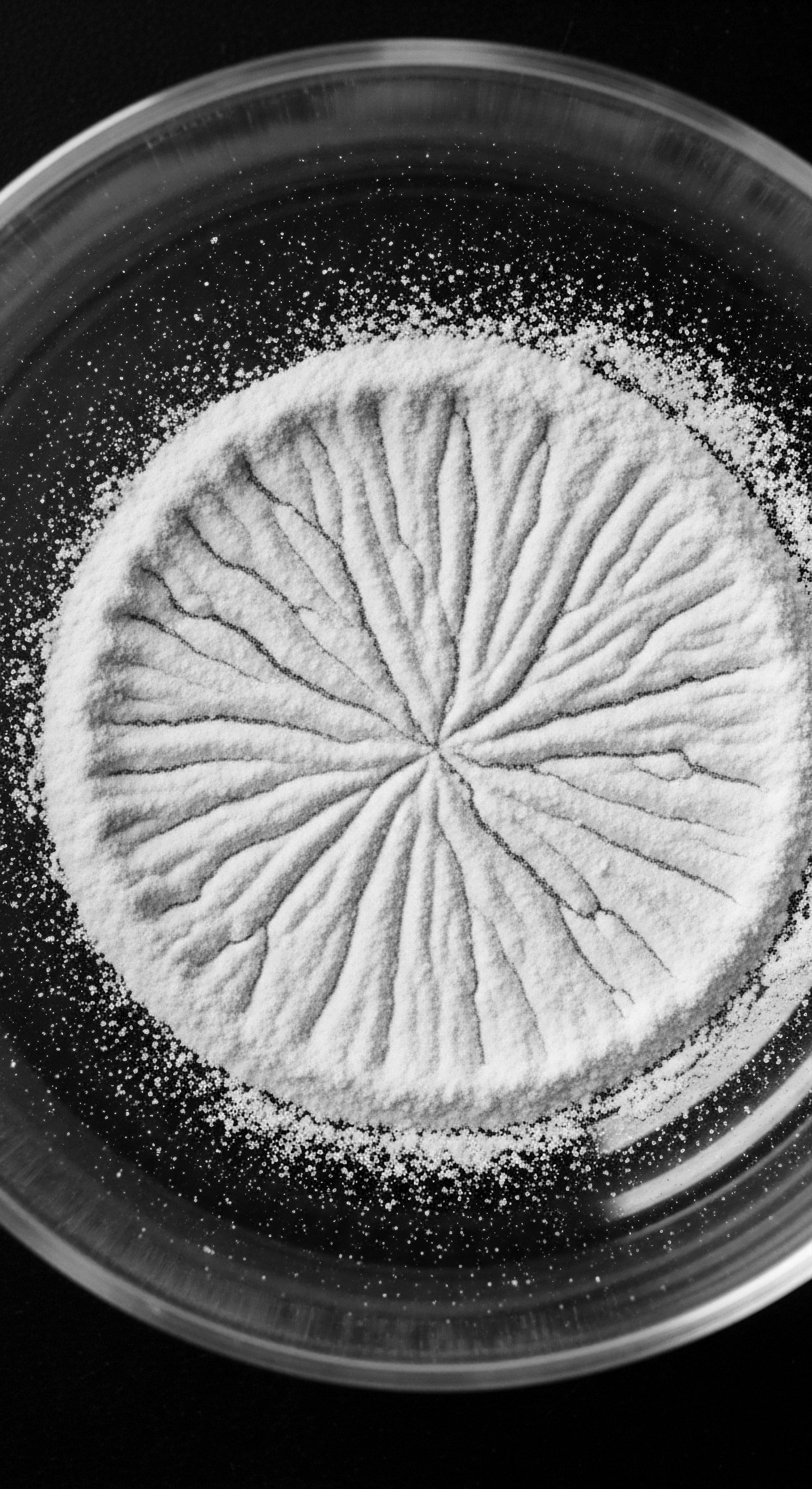
References
- Charles, N. (2018). Hair Story ❉ Untangling the Roots of Black Hair in America. St. Martin’s Press.
- Robbins, C. R. (2012). Chemical and Physical Behavior of Human Hair. Springer.
- Blench, R. M. (2000). The Ethnobotany of African Hair Care ❉ A Survey of Traditional Practices. African Ethnobotanical Journal.
- Powell, L. (2014). Black Hair ❉ Art, Culture, History. Schiffer Publishing.
- Franbourg, A. Hallegot, P. Baltenneck, F. Toutain, C. & Leroy, F. (2003). Current research on ethnic hair. Journal of the American Academy of Dermatology, 48(6), S115-S119.
- Hardy, J. L. (2007). Hair Care and Beauty ❉ A Cultural History. University of California Press.
- Marsh, L. (2019). The Natural Hair Handbook ❉ A Guide to Coily, Curly, and Wavy Hair. Ten Speed Press.
- Gann, A. (2021). The Science of Black Hair ❉ A Comprehensive Guide to Textured Hair Care. Self-published.
